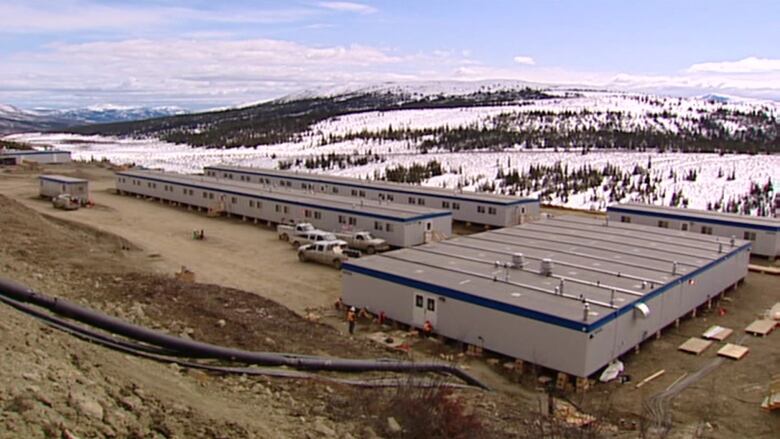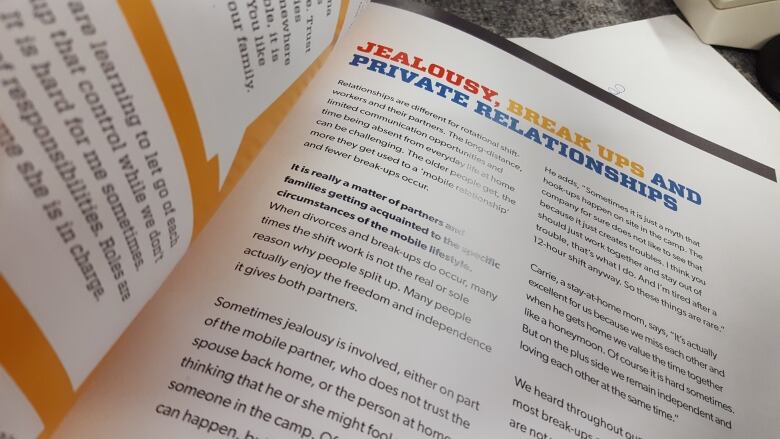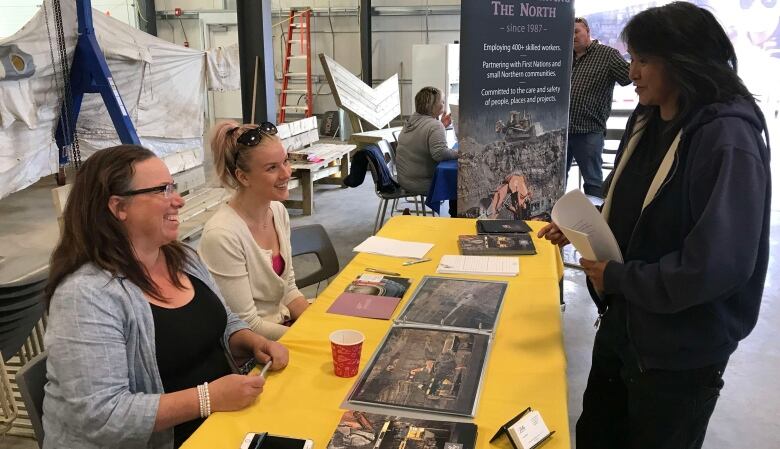Fly-in work and family stress: Researchers explore the pitfalls for remote workers
'Theres very similar issues that come up wherever you are ... when it comes to rotational shift work'

It's called "FIFO"or "DIDO"work and it can mess upyourlife even while providing a livelihood.But a new guidebook devised in the Northaims to help workers avoid the pitfalls.
FIFO refers to "fly-in/fly-out" rotational shift work, while DIDO refers to "drive-in/drive-out" in other words, the sort of work arrangements typical at remote mining sites in the North.
"There's very similar issues that come up wherever you areacross the globe, when it comes to rotational shift work," said Susanna Gartler, an AustrianPhD studentwho co-authored "The Mobile Workers Guide."
"Two weeks on, two weeks off, or three weeks on, one week off, or whatever your shift roster isthe issues are very similar."

Gartlerand co-author Gertude Saxinger also from the University of Vienna wrotethe guide with the help and support of the Yukon'sNa-ChoNykDun First Nation.
Many First Nation members have worked at remote mining and explorationcamps in the region, and evenmore will, as new mines open such as Victoria Gold's Eagle Gold project near Mayo.
The two researcherstravelled to communities across Yukon, gathering stories andperspectivesfrom people who work or have worked at remote camps.Saxingerhas also studied fly-in/fly-out work in Siberia.
The guide is largely intended foryoung workerswho may be new to rotational shifts, said Saxinger.
"They should know what comes up, and think about it," she said. "The older you get, the more experienced you get you have figured things out."
No fussing on the phone
The biggest issue for most workers, Saxingersays, is family life.
"You have to discuss with your family, also with your kidshow shall we reorganize our family life?
"Be ready not to get involved in the micro-business at home. That's so important not to fuss over the phone," Saxinger said.
Gartleragrees, and says it's especially important for workers away at a job site to focus on work, not home.
"If you get too involved, then you might be thinking about stuffthat might be going on at home while you are at work, and that can be dangerous because mine sites are dangerous places."
The guide includes testimonials from workers, and their partners, who have learned the lessons first-hand.

"If you are having a lot of drama back home, your camp life is going to be really miserable. Trust me," a worker named Brady is quoted saying. "If your home is stable it is much easier and safer."
"If you trust each other, then mining is good for families. If you have a toxic relationship, then good luck," says another quote from a worker named Jeremy.
Making money and managing loneliness
The guide also looks beyond family life, though, and touches on other stresses and challenges workers can face loneliness, substance abuse, and managing money.
"Probably everyone hasheard about mine workers who blew up all their money, whichis kind of sad because they work hard, they earn their money, and then sometimes itis all gone, and they're left with nothing," Gartler said.
There's also day-to-day camp life to get used to everybody working, eating and sleeping in a sort of "enclosed" environment. Being social can help stave loneliness, but Saxinger says workers also have to learn to "not be bored by yourself."
"You also have to have a good balance ...how much you get involved in other people's business, or be by yourself," said Saxinger.
The guide also makes clear that camp life can be particularly challenging for women, who aretypically in the minority. Discrimination and sexual harassment can make for a toxic environment.

"I had a few incidences of sexual harassment myself, but I tend to be outspoken and not very shy. So I dealtwith them pretty well.I told those people straight to their face that their behaviour is not appropriate and if I wanted to I could get them kicked out of here," says a quote from a worker named Veronica.
The guide advisesthat there are laws and company rules to protect women from harassment and discrimination on the job, and victimsshould never be afraid to speak up.
The guide is not meant to discourage people from rotational shift work, though. Many testimonials describe how rewarding it can be, if youhave the right approach and perspective.
Saxingeralso notes that many Indigenous workers likerotational shift work because it allows them to maintain some aspects of a traditional lifestyle, even while pursuing wages. Being off for weeks at a time makes it easier togo out on the land, she said.
Saxinger and Gartlerare now in the middle ofa "presentation tour" in Yukon, visiting communities to talk about the guide and hand out copies. They'll visit Watson Lake on Monday, Ross River on Tuesday, and Carmacks on Wednesday.
Copies of the guide are available online, or from the Yukon Chamber of Mines.
With files from Sandi Coleman












_(720p).jpg)


 OFFICIAL HD MUSIC VIDEO.jpg)
.jpg)



























































































